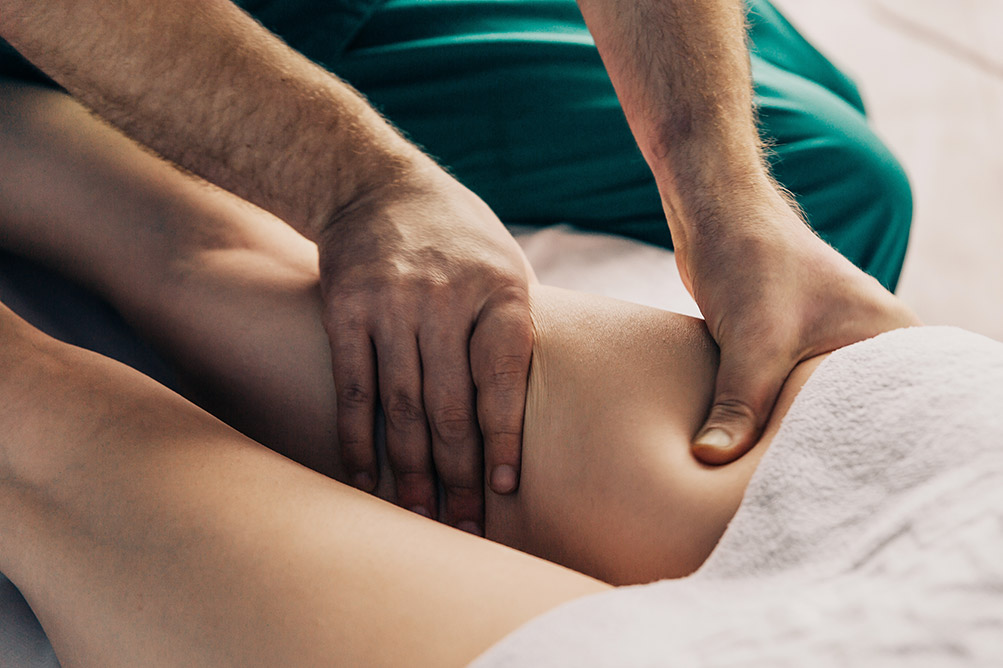Lymphatic drainage

Lymphatic drainage
If you suffer from persistent oedemas of various origins or other bothersome complications related to blood or lymph flow, lymphatic drainage is certainly an excellent way to recover. This is because it improves the function of the circulatory and lymphatic systems.
Lymphatic stasis can be indicated by symptoms such as:
- chronic, recurrent oedema;
- venous insufficiency, varicose veins, blood clots – in the latter case drainage is not advisable.
Struggling with various swellings?
Make an appointment for a consultation.
Lymphatic drainage – what should you know about it?
Lymphatic drainage is a therapeutic method developed by the Danish physician Emil Vodder. Its implementation is characterized by pressing and rubbing the skin, through the use of specific techniques and specialized movements to push the accumulated lymph, eliminate swelling and improve lymph circulation, and thus open the lymph nodes. However, these are not the only properties that are considered beneficial to health. It accelerates the removal of unnecessary metabolic products from the body, and after heavy physical exertion, it helps to eliminate post-workout edema and improves the nutritional conditions of tissues. It is also used as a method supporting weight loss and cellulite reduction.
Drainage requires a lot of concentration on the part of the physiotherapist and extremely precise movements. If you want to maintain the results, you should sign up for a series of treatments. Remember to drink the right amount of water after each session – you will then improve the entire detoxification process. Don’t be afraid of the pain – the only thing that you should associate with lymphatic drainage is a feeling of relief and relaxation.
After an interview with you, we will decide if you qualify for the procedure. There are certain contraindications that cannot be ignored, such as: atherosclerosis, hypertension, heart failure, asthma, and pregnancy.